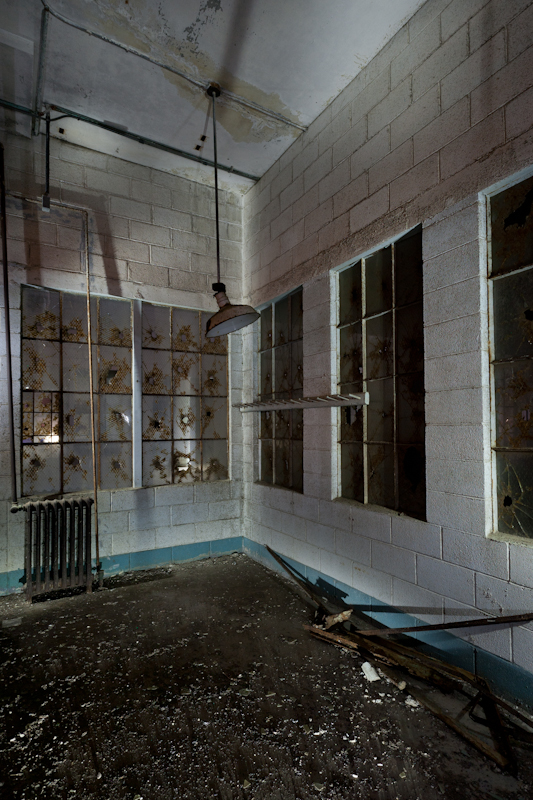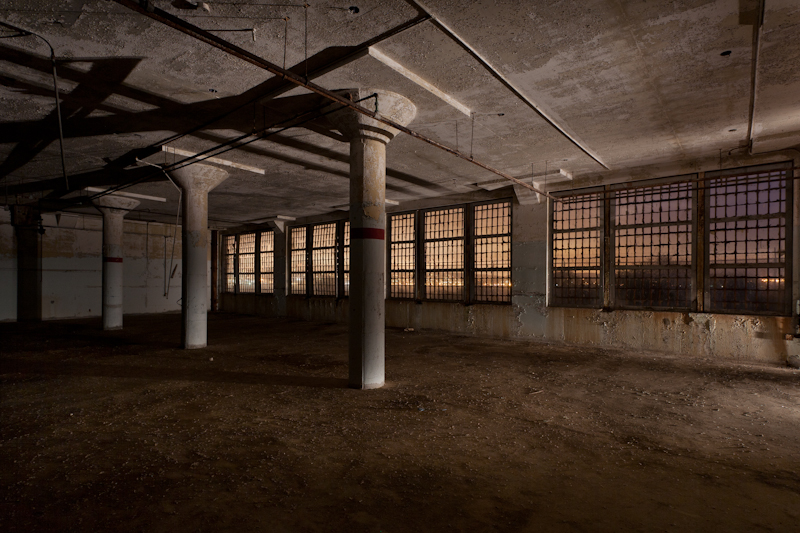Inside the New Industries building at Alcatraz.
Built in the 1940's, prisoners washed laundry for the government. At one time, it was the largest laundry facility on the West Coast.

Inside the New Industries building at Alcatraz.
Built in the 1940's, prisoners washed laundry for the government. At one time, it was the largest laundry facility on the West Coast.

Inside the recreation yard at Alcatraz. (Night. 105 seconds. Lit by moonlight & ambient light.)
Throughout the years of Alcatraz operation, the rules for the recreation yard changed. At one point, inmates were only allowed to spend a few hours on Saturdays and Sundays in the yard. During the later years, they were able to spend all day throughout the entire weekend playing basketball, handball, bridge or just chatting with other inmates.

(Dark room. 54 seconds. Lit by flashlight.)
The operating room inside the hospital at Alcatraz.

Though Alcatraz had a Morgue, no autopsies were actually performed here. Bodies were stored there until they could be transported to San Francisco and released to the Coroner.

(Night. 60 seconds. Lit by full moon and ambient light.)

(Night. 240 seconds. Lit with ambient light & moonlight.)
This Model Industries Building on Alcatraz was one of two buildings on the island where the prisoners could have jobs. Working was surprisingly, an escape for many of the prisoners. It helped to combat the monotony and isolation of prison life and gave inmates work experience for their life after release.

(Night. 120 seconds. Lit with Xenon flashlight.)
Here in the New Industries building at Alcatraz, built in the 1940's, prisoners washed laundry for the government. At one time, it was the largest laundry facility on the West Coast.

A hospital room, across from the Psychiatric Ward, at Alcatraz.
During the early 1900's, inmate labor fueled the construction of a new cellhouse, designed by Major Reuben Turner. The cell house contained 600 cells, a hospital, mess hall and other prison buildings. The complex was completed in 1912 and was the world's largest reinforced concrete building at the time.